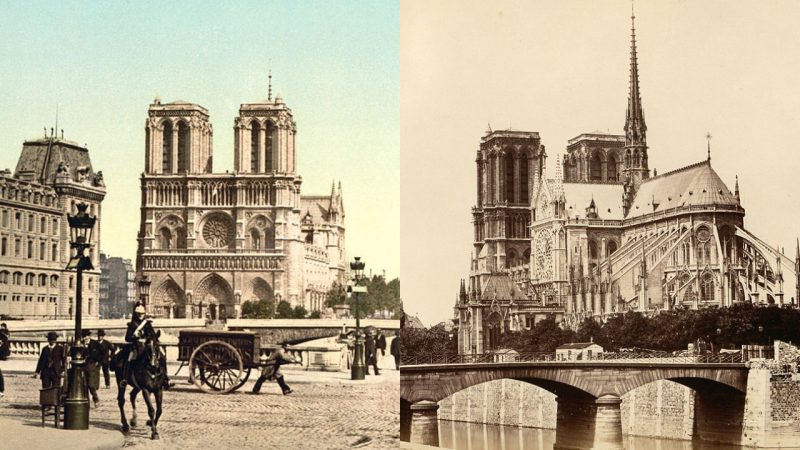Notre Dame Cathedral drew more than 13 million visitors each year, constituting one of the most important landmarks in Paris, second only to the Eiffel Tower. Now, however, it faces years of reconstruction before it can be brought back to its former glory — after April 15, 2019, nothing will be the same.
While the whole world stood petrified, confronted by heart-wrenching images of the cathedral, brave firefighters were struggling to salvage as much as they could of the centuries-old relics. Indeed, a large chunk of the history of France lies between the flying buttresses of Notre Dame, as the church has seen more than 850 years of prosperity, turmoil, revolution, wars and peace.
The foundations for the cathedral were laid in 1160, under the watchful eye of Bishop Maurice de Sully. It’s location on the sacred eastern part of the Île de la Cité (City Island), an area that has been dedicated to worship since it was established as the heart of the city in Roman times. Construction lasted for around 100 years.
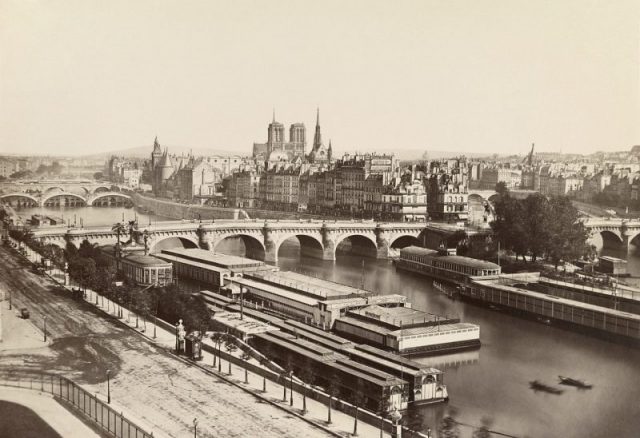
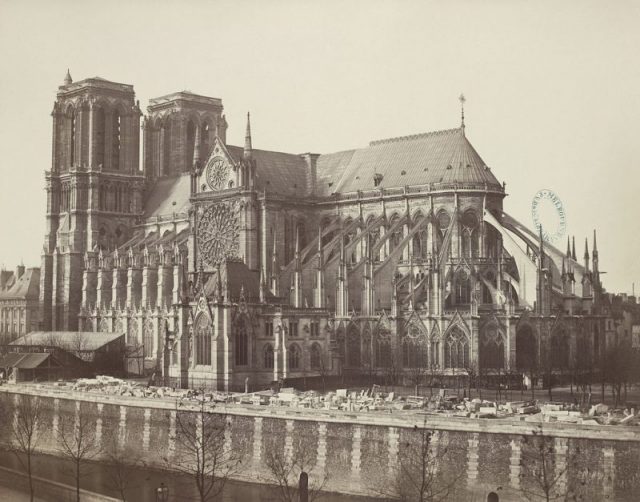
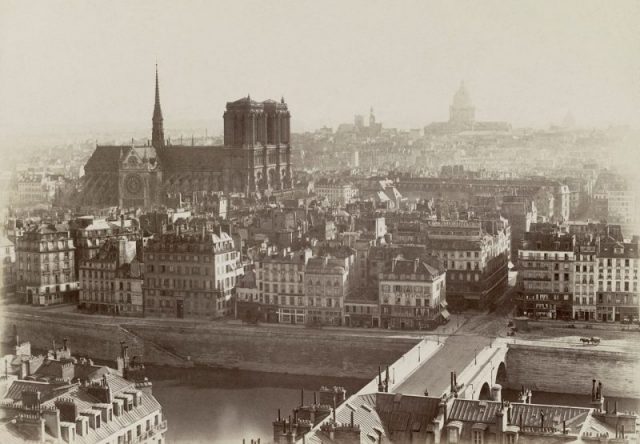
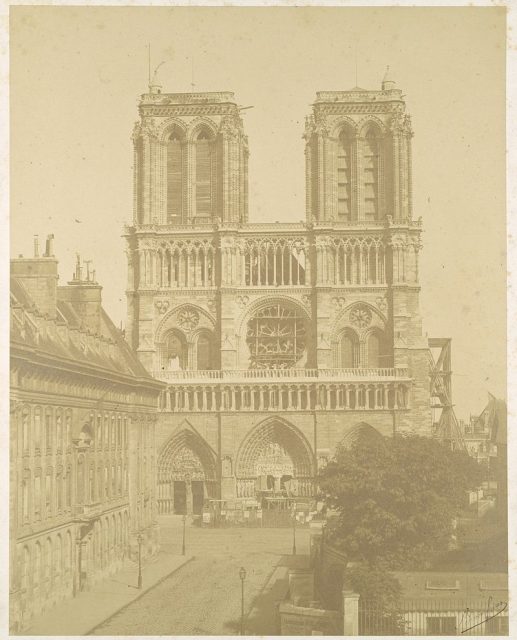
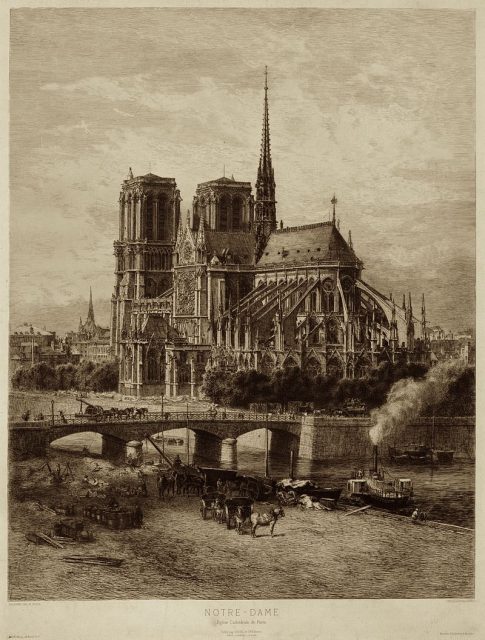
Initially constructed under the watchful eye of Maurice de Sully, the Bishop of Paris, it was placed on a site used for worship of Jupiter since the Roman settlers in Gaul. Before the magnificent cathedral, a humble Christian basilica occupied this plot of sacred land.
Although various modifications were introduced in the following centuries, the cathedral’s rib vaults, external support pillars, huge rose windows bathed in colors, and sculptural decorations, which include the legendary gargoyles, were the product of the original building endeavor.
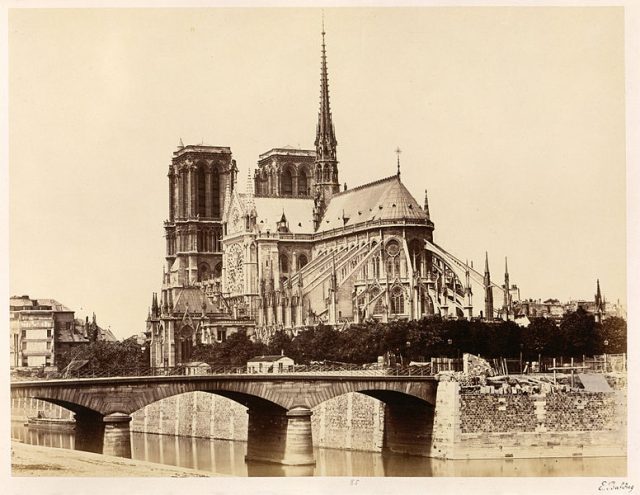
Making a clear break from the former Romanesque style, Notre Dame set the bar for future stone masons, legitimizing the coming of a new Gothic aesthetic. The architects of Notre Dame had clear intentions of creating the largest ecclesiastical building in France ― one that would cast a long shadow over the roofs of Paris and prove France’s loyalty to God.
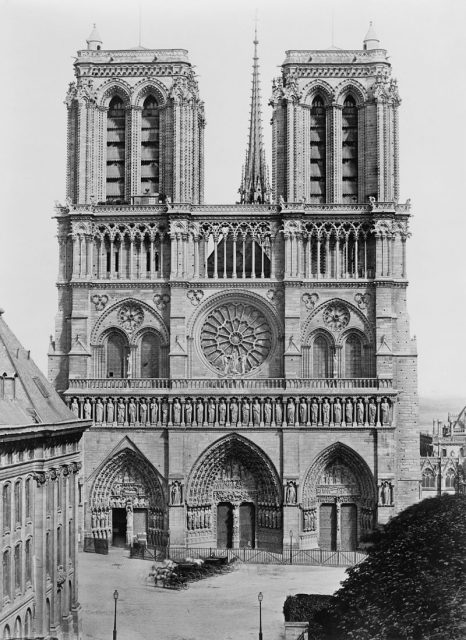
Gothic architecture, which originated in France, was characterized by re-combining the already-known Romanesque elements into a more innovative approach, enabling the builders to construct taller cathedrals with the help of external support pillars.
It also introduced a better understanding of natural light, and the way it can be funneled into a church, thus creating a sense of unprecedented divinity.
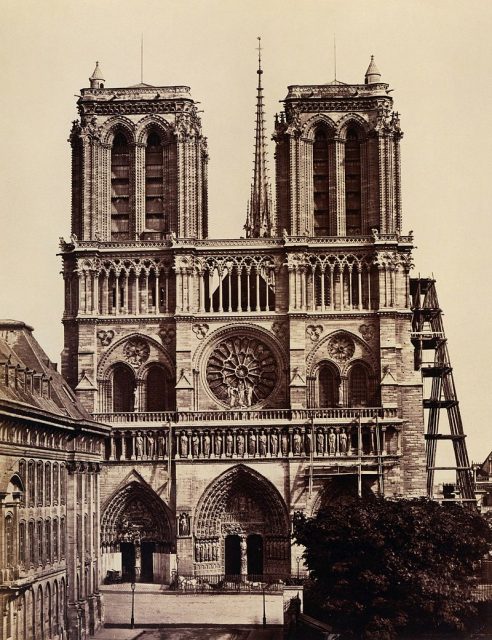
The 223-feet tall (67 m) towers, along with the 108-feet tall (32 m) have appeared as a striking sight in medieval Paris, crowning the city as one of the most important places of Christian pilgrimage in Europe. The spire — which was sadly destroyed, along with two-thirds of the roof — was originally built in the 13th century but was replaced during a major restoration effort that took place between 1844 and 1864.
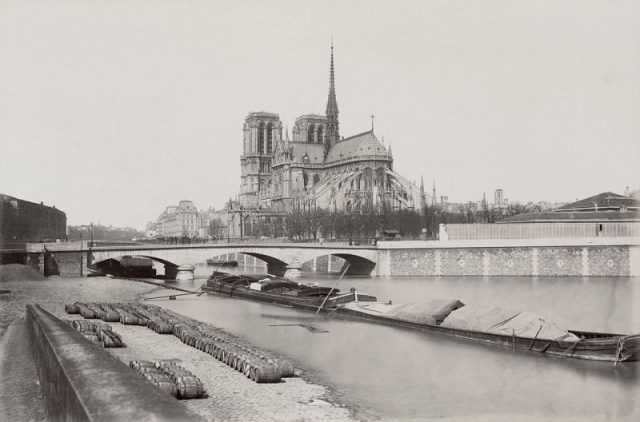
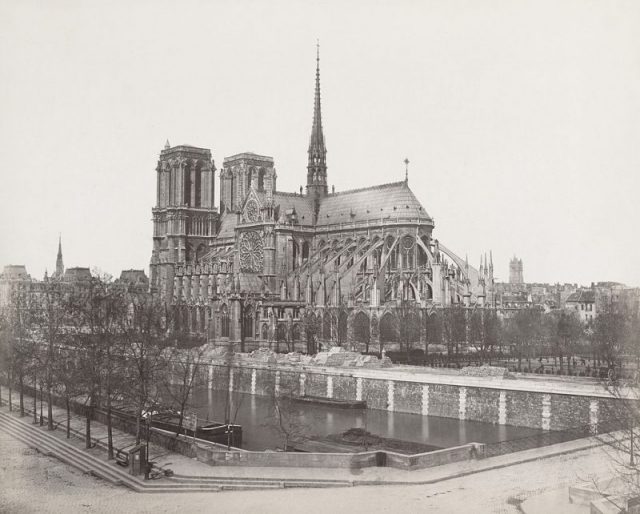
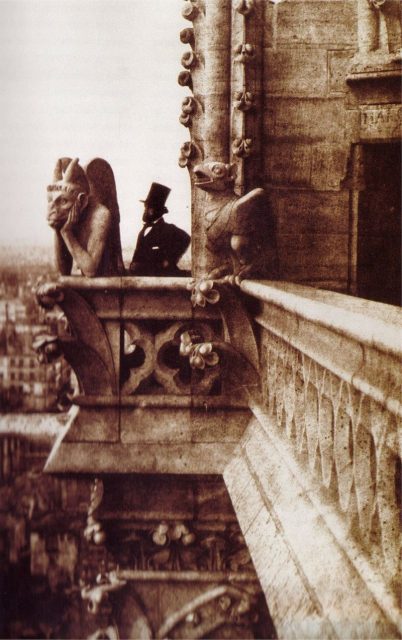
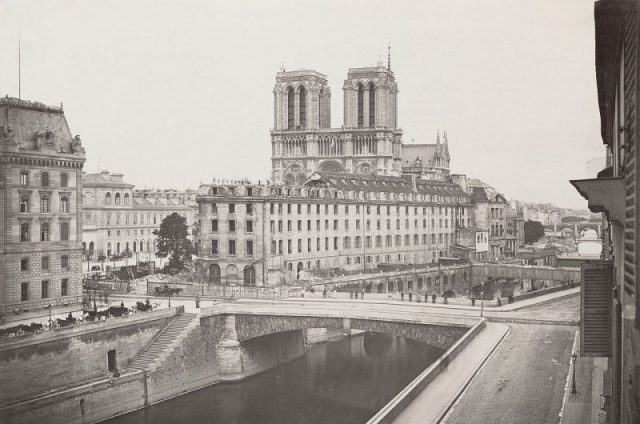
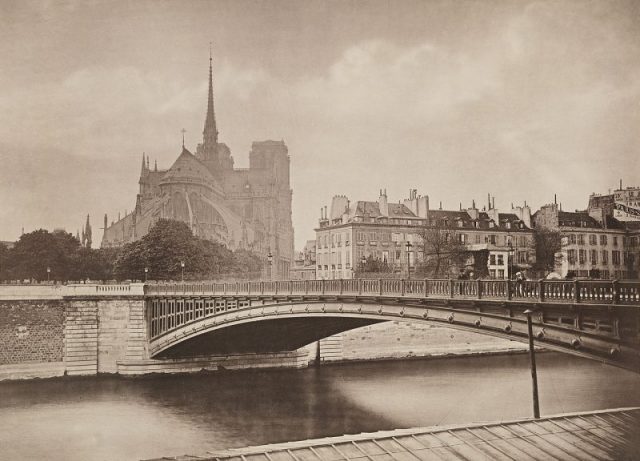
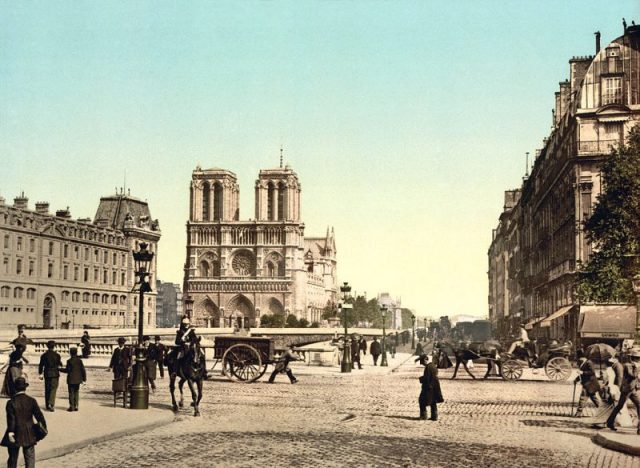
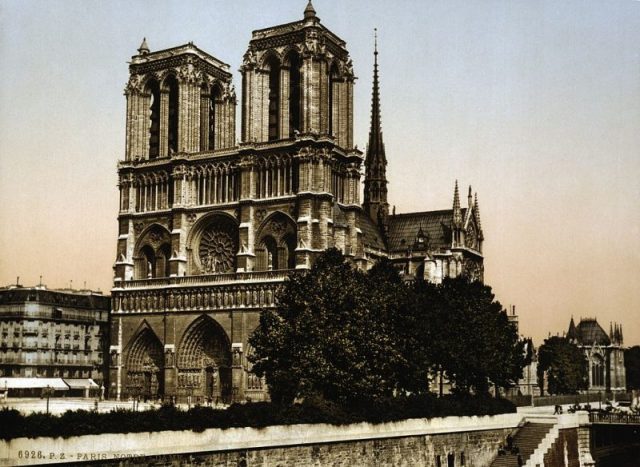
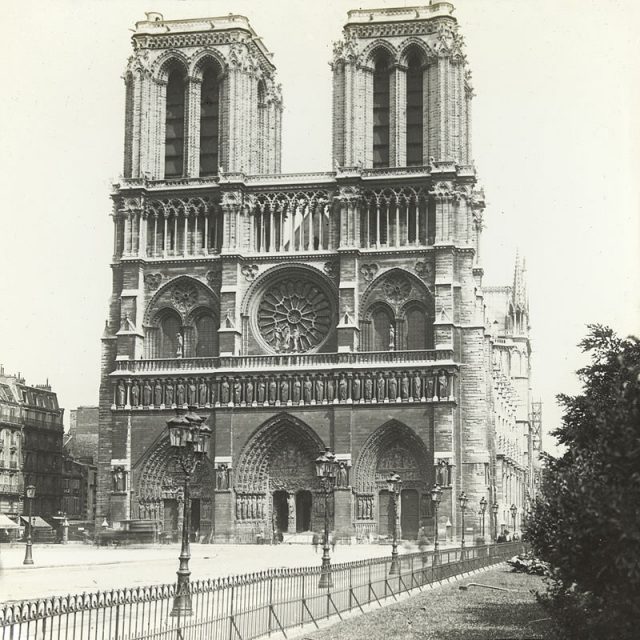
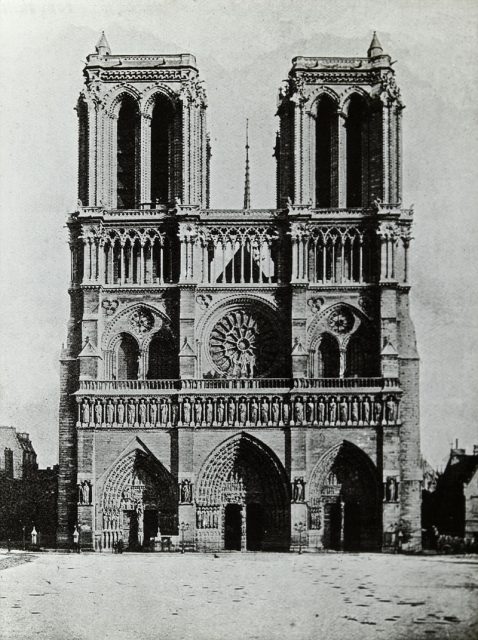
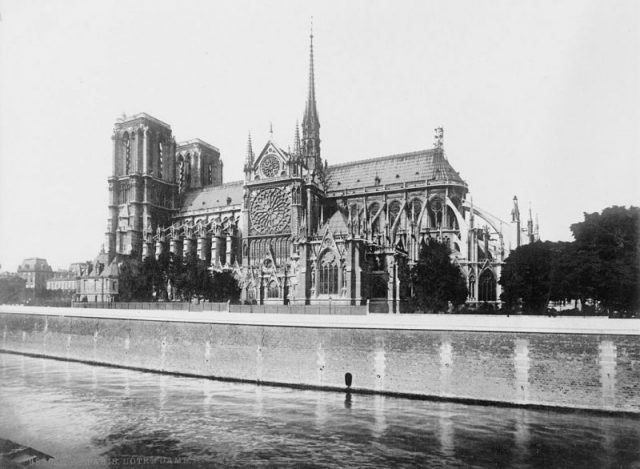
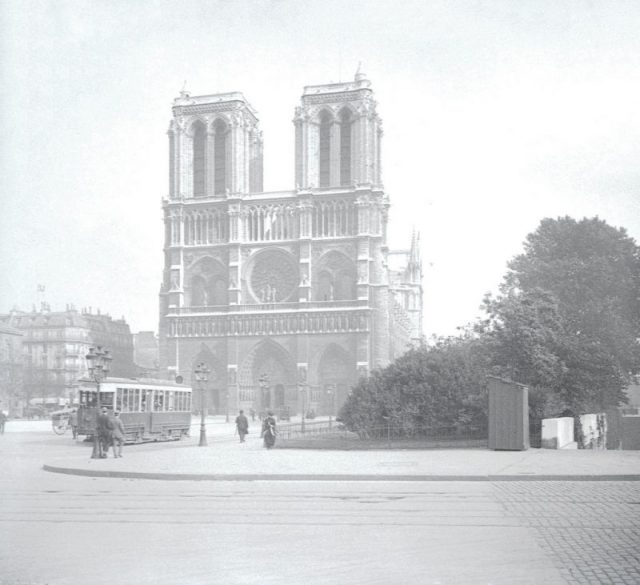
Notre Dame has had a turbulent history. Most notably during the Huguenot Riots of 1548 and the French Revolution of 1789 when the cathedral was seen more as a sign of religious repression rather than a devotional temple to God.
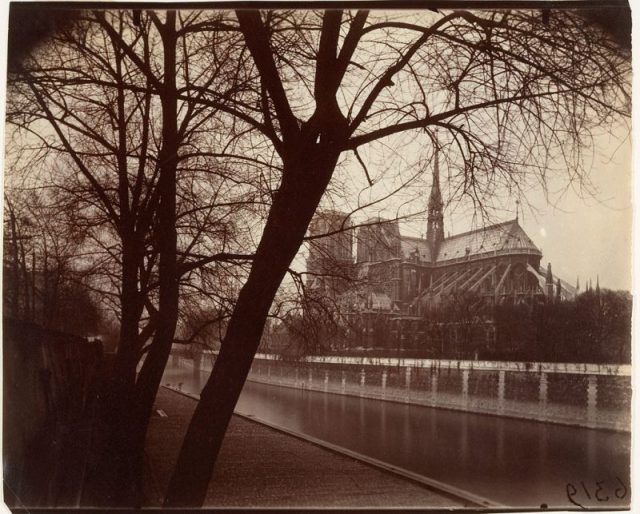
Throughout its history several attempts of restoration were made, perhaps the biggest effort being between 1844 and 1864, when it was supervised by Eugène Viollet-le-Duc. Viollet-le-Duc was a renowned French architect who dedicated his life to restoring medieval structures, and the idea of restoring the cathedral came in the wake of a literary phenomenon, which sparked huge interest in the history of Notre Dame.
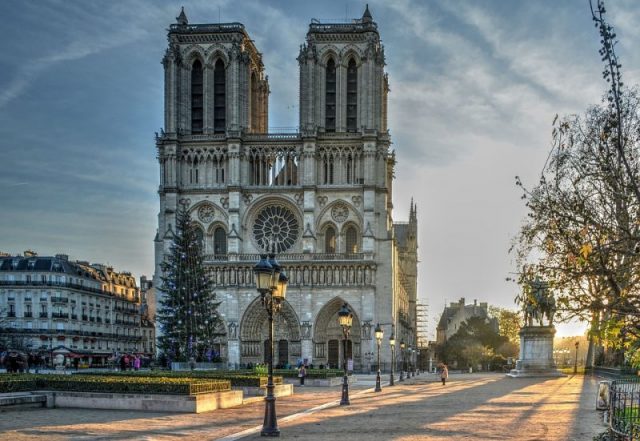
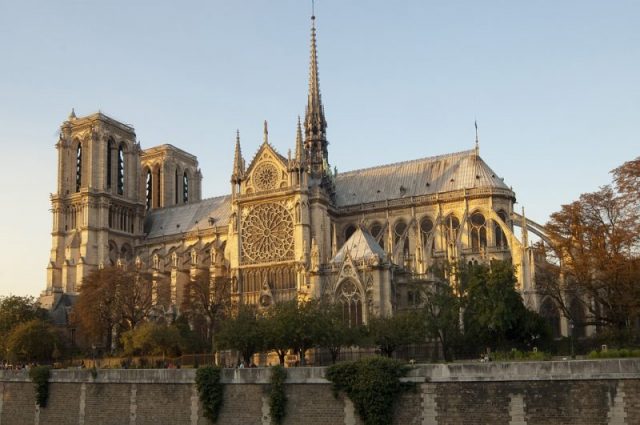
The restoration was partly caused by the renewed interest for Notre Dame that came along after Victor Hugo’s literary masterpiece, The Hunchback of Notre-Dame, was published, sparking popularity due to its detailed descriptions of the cathedral.
Related Story: The Grotesque Stories Behind the Famous Gargoyles of Notre Dame Cathedral
Throughout the ages, “Our Lady of Paris” has survived through everything, and it always came out restored and more beautiful than ever. Certainly, it will overcome this too, and emerge victorious once again.
